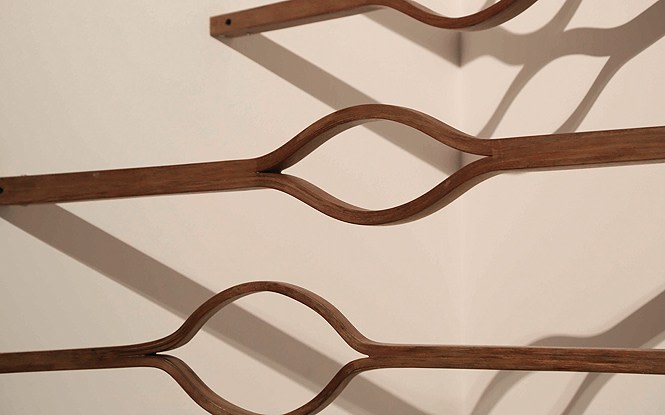
About five months ago, I visited the Talwar Art Gallery to see Navjot Altaf's sculptural installation, and I ended up having a long and gratifying chat with the artist. Among other things, Altaf shared with me that her choice of sculpture as a form is always informed by a definitive idea of imagining objects in their totality. It's like the simplistic yet reflective observation made by Tom Stoppard about Modern art - "It is not hard to understand modern art. If it hangs on a wall it's a painting, and if you can walk around it it's a sculpture." Hence, when I found myself amidst the sculptural installations of Ranjani Shettar, part of her show titled Between the Sky and Earth at Talwar, the first thing I wanted to ask was about the choice of sculpture as a form. Shettar said, "You see when I try and imagine or visualize a certain artwork, it is always three-dimensional. I find it extremely difficult to think in terms of flattened surfaces and hence painting or photography never became my means of expression." Shettar is an acclaimed artist whose artwork was included in the Museum of Modern Art in New York in 2010, besides other noted art institutions. Between Sky and Earth is a saga in wood, where the artist defies the integrity of the material itself.
Shettar's earlier work has been characteristic of an intrinsic desire to challenge gravity, alongside the nature of the material itself. Wood itself is heavy and hence creating seemingly interminable forms that are suspended mid-air from it, registers a certain amount of disregard that bounds idiomatic materiality. The titular work, an installation in teakwood represents this exactly. Interestingly, in this exhibition, an untitled piece and another titled Torque, are extremely grounded and in tune with the laws of gravity. At first one would think that Shettar moves away from the breaking of conventional moulds, but then one realizes that the very fluid nature of the untitled work, which is like flowing stepping stones marked with red dots is something the very materiality of wood does not accommodate. Torque, on the other hand, destabilizes any notion of symmetry, yet harmonically assumes base and structure. Remanence from last night's dream, in all its stark prosaicness, culminates in a visual reverie.
"I like to play with illusion. For example, the suspended pieces can be perceived as either falling down, or rising up, or suspended mid-air. My artworks are the same time the culmination and extension of a studio process. I end up making detailed notes and charts on elevation and other details before transporting my work." Rodin once remarked that "Sculpture is the art of the hole and the lump." Talking to Shettar about her work process one could not but help the resonation of this observation. She said, "I love working with wood. It helps me to learn from handling the material every day. With each passing day, the grain and the color itself changes. Also, once you start chipping away, bit by bit, you discover newer textures and patterns that completely transform your vision."
The show also includes a print work in four parts titled Stonewall's Bloom. Printmaking is the only two-dimensional undertaking that Shettar allows herself. Varsha, an artist's book published by the Library Council of The Museum of Modern Art in late 2012, is Shettar's pioneering work with prints that involve the 16 phases of monsoon.
-Abhirup Dam